|
| |
Multivariate Cluster Analysis of Oriented
Discontinuity Data: Three-D Stereonet
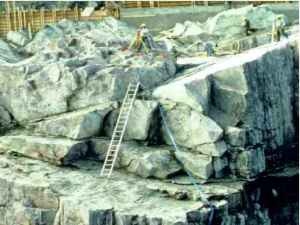 |
The characterization of discontinuous rock requires measuring and
characterizing discontinuities (joints) and identifying sets or families
of joints based on their orientation or some combination of other
attributes.
|
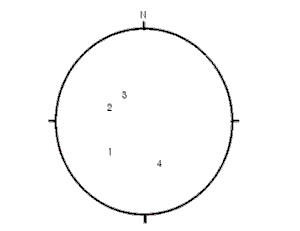 |
Consider a lower hemisphere stereonet with 4 joint normals
(poles), each pole from a different depth along an imaginary vertical
borehole. |
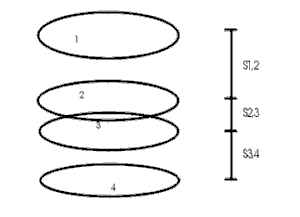 |
Each pole is plotted on an individual stereonet, and the
stereonets are stacked with spacing proportional to the spacing between
the discontinuities along the borehole. |
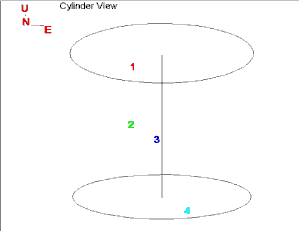 |
Thus the concept of a "three dimensional stereonet. |
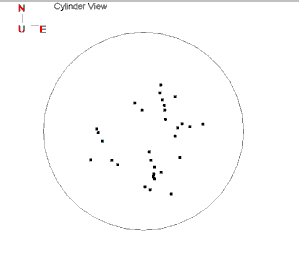 |
Consider this contrived data set, . |
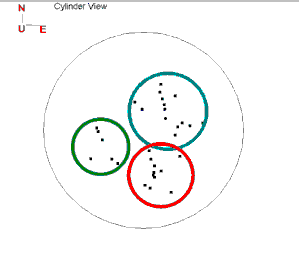 |
Conventional cluster analysis might determine three joint
sets in this manner. |
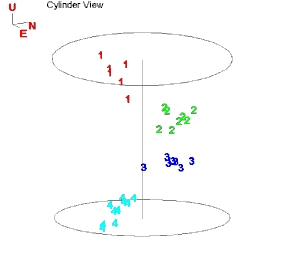 |
If we use both orientation and spacing as a parameter in the
cluster analysis, we may get this type of clustering. |
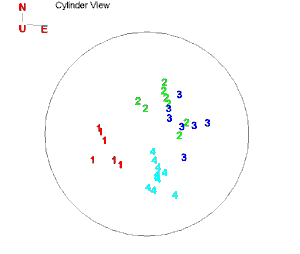 |
Shown here in a conventional view. |
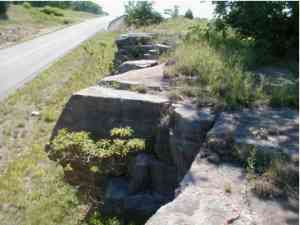 |
As an example, a seemingly cut and dry example of a
sandstone with 3 mutually orthogonal joint sets.
|
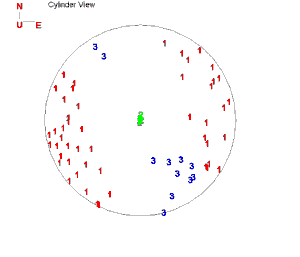 |
Conventional clustering analysis shows wide variability on
the sub-vertical discontinuities. |
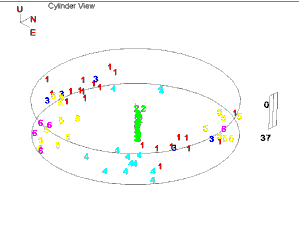 |
Clustering on basis of orientation, position, and roughness
of the discontinuity results in 6 sets, including 5 sub-vertical
sets. Sets 6 and 3 are distinguished by their high roughness values,
and from each other by their orientation and position. Sets 1,4,5 are
distinguishable by their moderate roughness values, and are distinguished
from each other by their position and orientation. |
|

|
| REFERENCES:
Maerz, N. H., and
Zhou, W., 2000. Discontinuity data analysis from oriented
boreholes. Pacific Rocks; Proceedings of the Fourth
North American Rock Mechanics Symposium, Seattle, Washington, July 31-
Aug.1, 2000, pp. 667-674.
Maerz, N. H., and
Zhou, W., 1999. Multivariate analysis of bore hole
discontinuity data. Rock Mechanics for Industry,
Proceedings of the 37th US Rock Mechanics Symposium, Vail Colorado, June
6-9, 1999., v. 1, pp. 431-438. |
|

